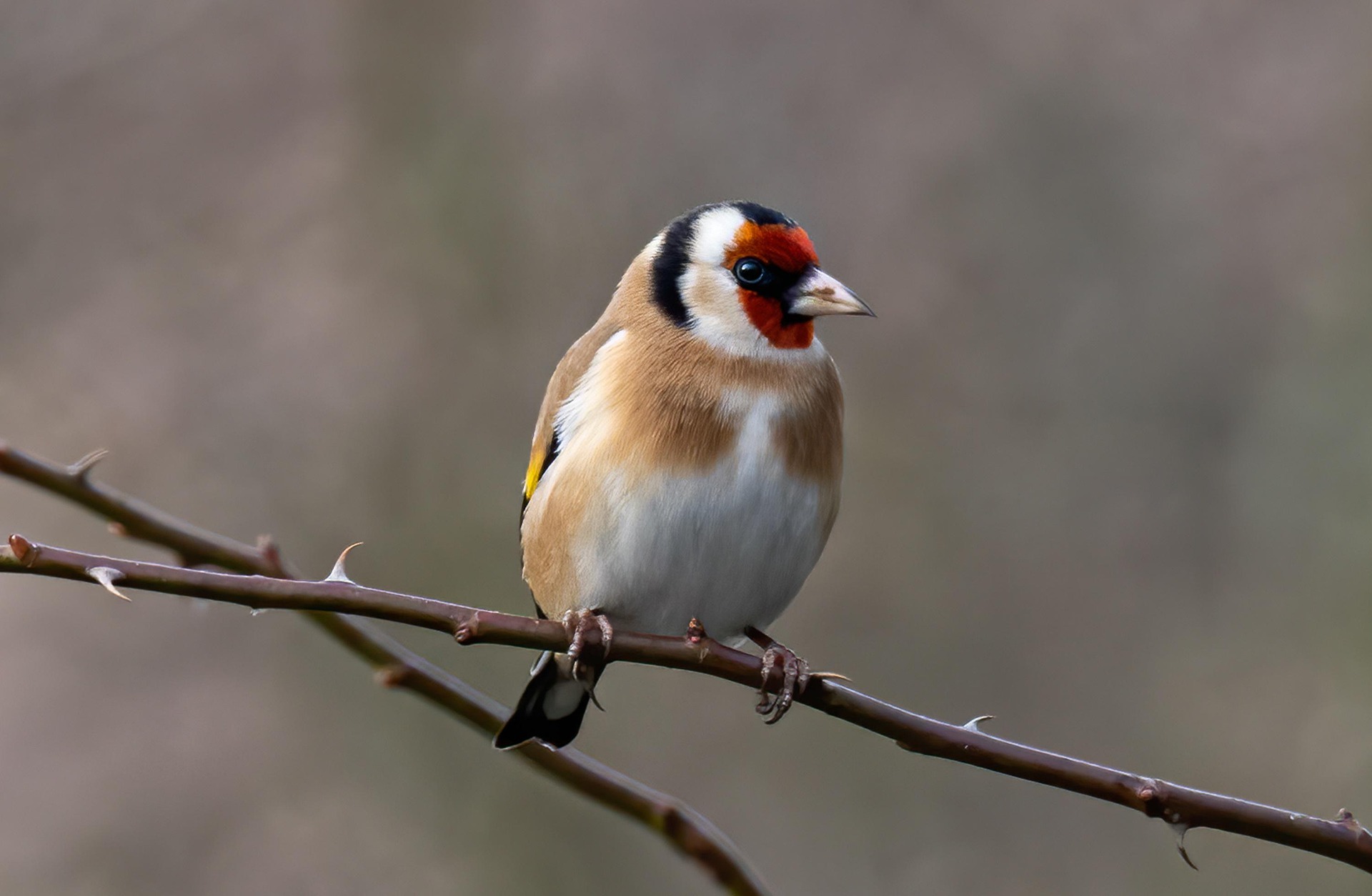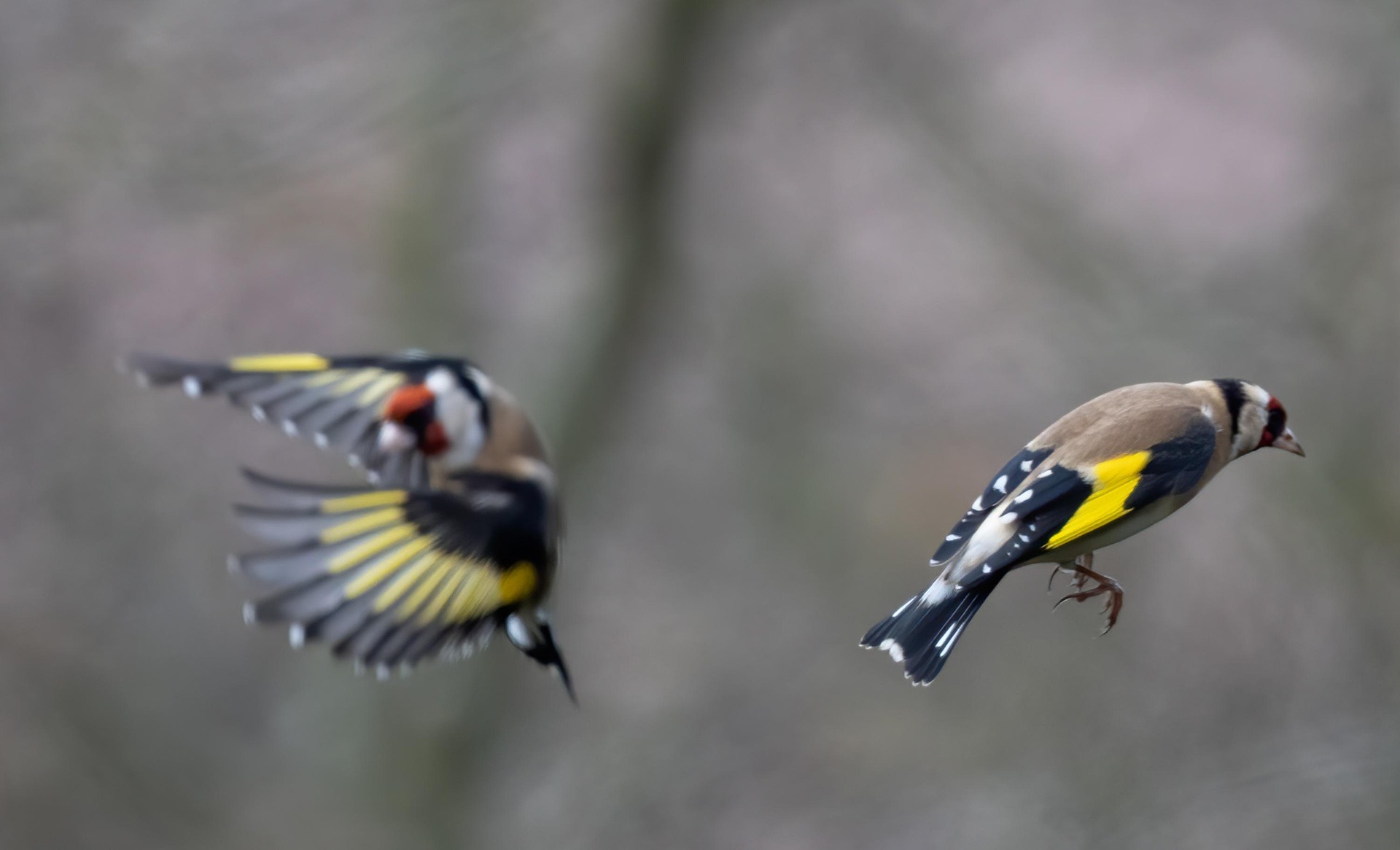European Goldfinch (Carduelis carduelis) is a colorful passerine bird of the finch family (Fringillidae), widely distributed across Europe, North Africa, and Western Asia. It is easily recognized by its bright red face mask, black-and-white head, and distinctive yellow wing bar. The species feeds mainly on the seeds of herbaceous plants and usually lives in small flocks. It can be found in parks, gardens, farmland, and open woodland areas.

European Goldfinch (pixabay)
Morphological Characteristics
The European Goldfinch is a slender and elegant finch, measuring about 12–13 cm in length. It is easily identified by its bright red facial mask, black-and-white patterned head, and striking yellow wing bar. The back is light brown, the underparts are whitish, and the tail feathers are black. Males and females look similar, though males typically have a slightly broader red mask. Juveniles are grayish-brown and lack the distinctive head markings; the yellow wing bar is the main feature used to identify the species at this stage.
Distribution and Habitat
The European Goldfinch is widely distributed across most of Europe, as well as Western and Central Asia, and North Africa. Its range extends from the British Isles to Iran, and from the Mediterranean coasts to the Ural Mountains. There are also established or escaped populations in North and South America, Australia, and New Zealand. The species inhabits open woodland areas, farmland, gardens, parks, forest edges, and shrublands—essentially habitats rich in herbaceous plants. It is rarely found deep within forests or in completely treeless regions.
Breeding and Feeding
The European Goldfinch breeds between April and August. It builds its nest among the branches of trees or shrubs, usually 2–10 meters above the ground, well hidden among the leaves. The nest is constructed from fine grasses, moss, plant fibers, feathers, and animal hair. The female lays four to six eggs per clutch, and the incubation period lasts about two weeks. Both parents feed the chicks, which fledge approximately two weeks after hatching.

European Goldfinch (pixabay)
The European Goldfinch feeds primarily on the seeds of herbaceous plants, showing a particular preference for the mature and immature seeds of thistles, dandelions, and other spiny plants. In addition to seeds, it also consumes buds, flowers, and small pieces of fruit. During the breeding season, adults supplement their diet with small insects and other arthropods to feed their chicks. Goldfinches usually extract seeds directly from the flower heads but will also feed on fallen seeds found on the ground.
Voice
The European Goldfinch has a clear, melodic, and distinctive song. Its flight call is often heard as a lively and rapid “tik-li-lit” sound. The song is a cheerful, fluid series of trills and warbles composed of varied tones and short, repeated notes. Both its song and flight call are characteristic and make the species easily recognizable in its natural habitat.
European Goldfinch Song Voice (xeno-cento)
Conservation Status
The European Goldfinch (Carduelis carduelis) is classified globally as Least Concern due to its wide distribution and large population size. However, in North Africa, local populations have declined significantly since the 1990s as a result of increasing illegal trapping and the cage-bird trade. In contrast, in parts of Europe, populations have shown signs of recovery thanks to conservation measures and a reduction in commercial capture. The species is listed under Appendix II of the Bern Convention and is legally protected in many countries.


